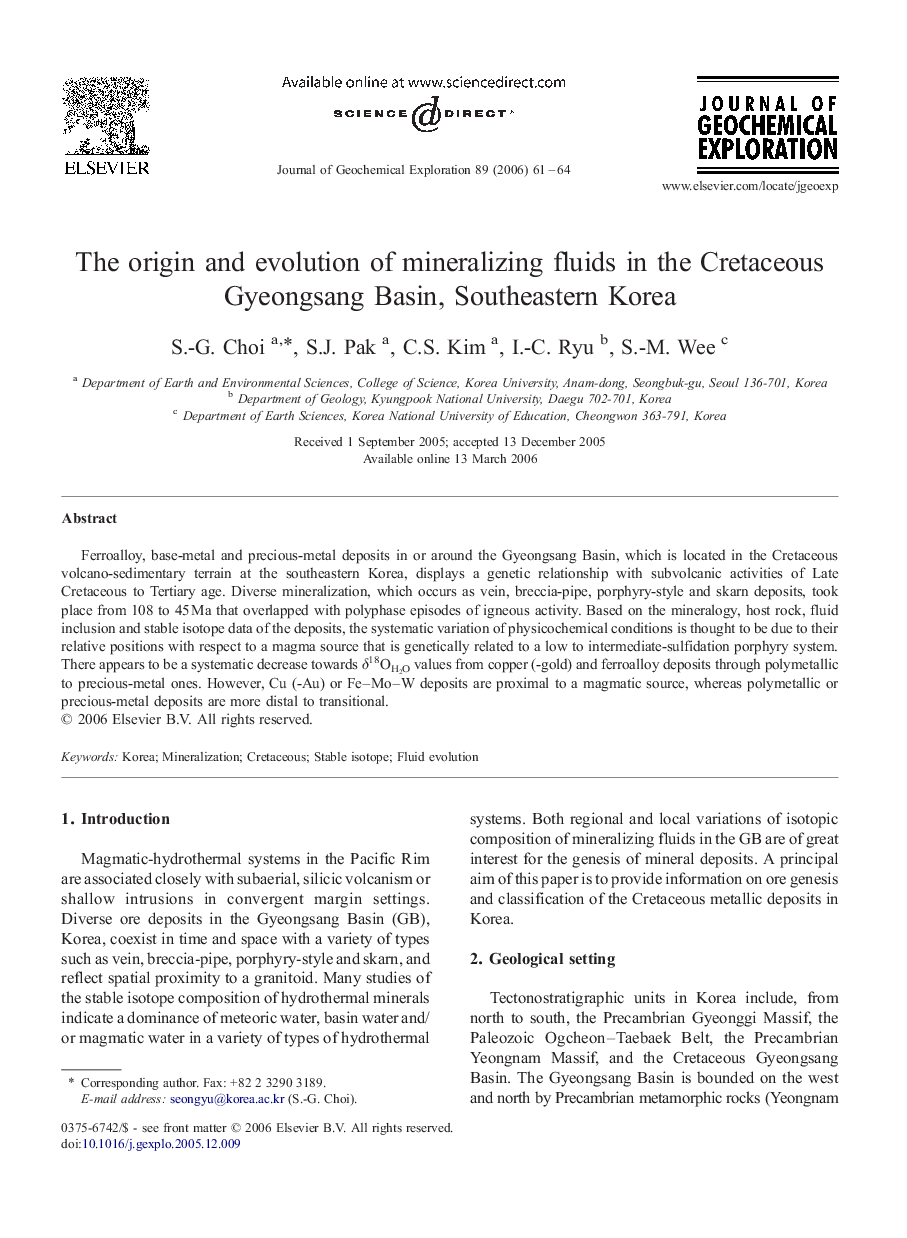| Article ID | Journal | Published Year | Pages | File Type |
|---|---|---|---|---|
| 4458418 | Journal of Geochemical Exploration | 2006 | 4 Pages |
Ferroalloy, base-metal and precious-metal deposits in or around the Gyeongsang Basin, which is located in the Cretaceous volcano-sedimentary terrain at the southeastern Korea, displays a genetic relationship with subvolcanic activities of Late Cretaceous to Tertiary age. Diverse mineralization, which occurs as vein, breccia-pipe, porphyry-style and skarn deposits, took place from 108 to 45 Ma that overlapped with polyphase episodes of igneous activity. Based on the mineralogy, host rock, fluid inclusion and stable isotope data of the deposits, the systematic variation of physicochemical conditions is thought to be due to their relative positions with respect to a magma source that is genetically related to a low to intermediate-sulfidation porphyry system. There appears to be a systematic decrease towards δ18OH2O values from copper (-gold) and ferroalloy deposits through polymetallic to precious-metal ones. However, Cu (-Au) or Fe–Mo–W deposits are proximal to a magmatic source, whereas polymetallic or precious-metal deposits are more distal to transitional.
